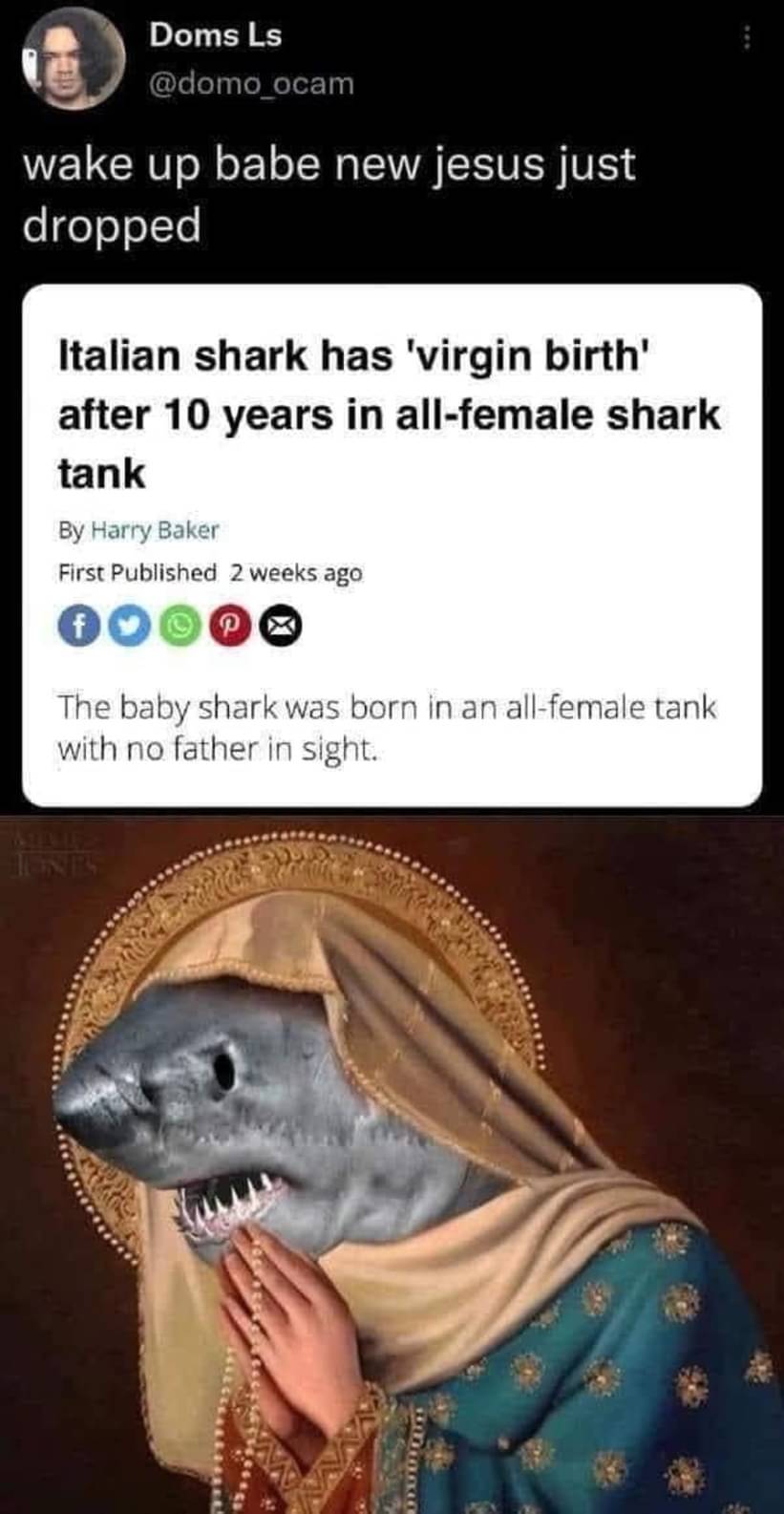this post was submitted on 13 May 2024
811 points (98.6% liked)
Science Memes
10377 readers
3010 users here now
Welcome to c/science_memes @ Mander.xyz!
A place for majestic STEMLORD peacocking, as well as memes about the realities of working in a lab.

Rules
- Don't throw mud. Behave like an intellectual and remember the human.
- Keep it rooted (on topic).
- No spam.
- Infographics welcome, get schooled.
Research Committee
Other Mander Communities
Science and Research
Biology and Life Sciences
- [email protected]
- [email protected]
- [email protected]
- [email protected]
- [email protected]
- [email protected]
- [email protected]
- [email protected]
- [email protected]
- [email protected]
- [email protected]
- [email protected]
- [email protected]
- [email protected]
- [email protected]
- [email protected]
- [email protected]
- [email protected]
- [email protected]
- [email protected]
- [email protected]
- [email protected]
- [email protected]
- [email protected]
- !reptiles and [email protected]
Physical Sciences
- [email protected]
- [email protected]
- [email protected]
- [email protected]
- [email protected]
- [email protected]
- [email protected]
- [email protected]
- [email protected]
Humanities and Social Sciences
Practical and Applied Sciences
- !exercise-and [email protected]
- [email protected]
- !self [email protected]
- [email protected]
- [email protected]
- [email protected]
Memes
Miscellaneous
founded 2 years ago
MODERATORS
you are viewing a single comment's thread
view the rest of the comments
view the rest of the comments

This is called parthenogenesis and is a known phenomenon, albeit rare in vertebrates. Some species, like the New Mexico whiptail, rely on it (all New Mexico whiptails are female).
Here is a paper from 2007 that talks about parthenogenesis in hammerhead sharks..
The New Mexico whiptail is also an F1 hybrid. If they go extinct, you can make more by hybridizing a little striped whiptail and a western whiptail. In case anyone thought that 'species' was a solidly defined word.
>F1 hybrid
https://youtu.be/gEzXrDL4F3k?t=4s
Laugh's in mule
Ee ah ah ah
Plug-in formulas
Man so jesus was real
Genomic imprinting says no. It wouldn't produce a fetus that is in congruence with the possibility of life. It could at most start growing and developing, but it would die in the womb. More akin to a tumor than to a baby.
How comes it's possible for a bird or a fish, but not a human? If this article explains why, it is a bit obscure for non specialists.
No worries the whole concept of parthenogenesis is a really obscure and obtuse one.
Here's a SciShow link that does a really good job of describing it in a less obtuse and confusing way.
Good to know. Didn't expect a serious reply
Interesting fact about the NM whiptail, they still need to have sex to reproduce for some reason, despite no gene swap occurring.
Wasn't this also like the inciting incident for the original jurassic park movie?
Nah.
That one was dinosaurs changed gender to male, citing the frog DNA they completed the chain with as having that potential.
So what was supposed to be an all-female park to prevent reproduction became co-ed and then nature happened.
I'm still confused on the difference
Edit: thank you to everyone who replied, I understand the difference now
One was direct development of an egg into an embryo, the other was conversion of an animal from one sex to another to facilitate mating.
Jurassic Park’s version is still sexual reproduction. Parthenogenesis is a form of asexual reproduction.
Parthenogenesis - egg just becomes embryo, no male required
Jurassic Park - one individual turned from female to male and started making babies
No, in Jurassic Park African frogs are used as the genetic gap filler, these frogs (and therefore the dinosaurs) are able to change sex in same sex environents
And with our votes combined, we will push this good scoop to the top! Thanks, friend!